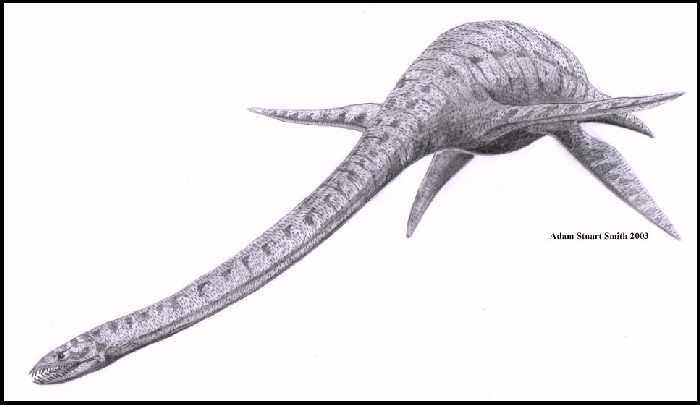268
Scientific Intelligence
4. Additional note on Elasmosaurus;
by E. D. Cope. - To my preceding note on Elasmosaurus, I append the following, in
consequence of the reading of another criticism by Prof. Leidy, in the Proceedings Acad,
Nat. Sci, Philad., January to April, 1870, (issued in June). [Leidy, J., 1870. Discosaurus and its allies. Proc. Acad. Nat. Sci. Phil.
22:18-22. (April 5, 1870)- Ed.]
In this Dr. Leidy agrees with my identification of Cimoliasaurus
and Discosaurus made in 1868, regarding them as the same. But he employs the name
Discosaurus instead of Cimoliasaurus,
to which we object for three reasons: 1, in works written subsequent to his determination,
Cimoliasaurus had been exclusively used, and has therefore obtained considerable
currency; 2, Discosaurus was founded upon a miscellaneous collection of species,
and not defined; 3, the name refers perhaps to an individual peculiarity of one of the
species, as suggested by Leidy, and conveys an erroneous impression of there being a
vertebral disc characteristic of the genus, whereas the peculiarity consists of a groove.
The name Cimoliasaurus is open to none of these objections.
He however unites with the above genus my Elasmosaurus, although a few pages
previously he considers them distinct, on the same grounds that convinced me of the
propriety of separating them, viz.: the enormous neck with compressed vertebrę III the
one, and the short transverse cervicals of the other. No such difference is displayed by
the species of Plesiosaurus, though there is considerable variation in the genus
in this respect. It cannot however be predicted, that no species combining the characters
of the two will ever be found. All genera in paleontology stand open to this risk,
The Cimoliasaurus grandis (Brimosaurus Leidy) presents the shortened
cervicals of C. magnus and therefore is not an
Geology and
Mineralogy.
269
Elasmosaurus.
The E. orientalis is as yet but little known, and
there way be doubts as to which genus it represents. In a restored figure of it which was
given in an article in the American Naturalist 1868, p. 84), it is represented with a neck
of the shorter type of Cimoliasaurus. Whether the shorter or longer type of
cervicals belong to it will remain uncertain until more remains are
found. If it be a true Elasmosaurus, the figure will represent
better a Cimoliasaurus.
In his second notice Leidy mentions his having reversed the extremities of the vertebral
series in the three Cimoliasauri described by him.
|

